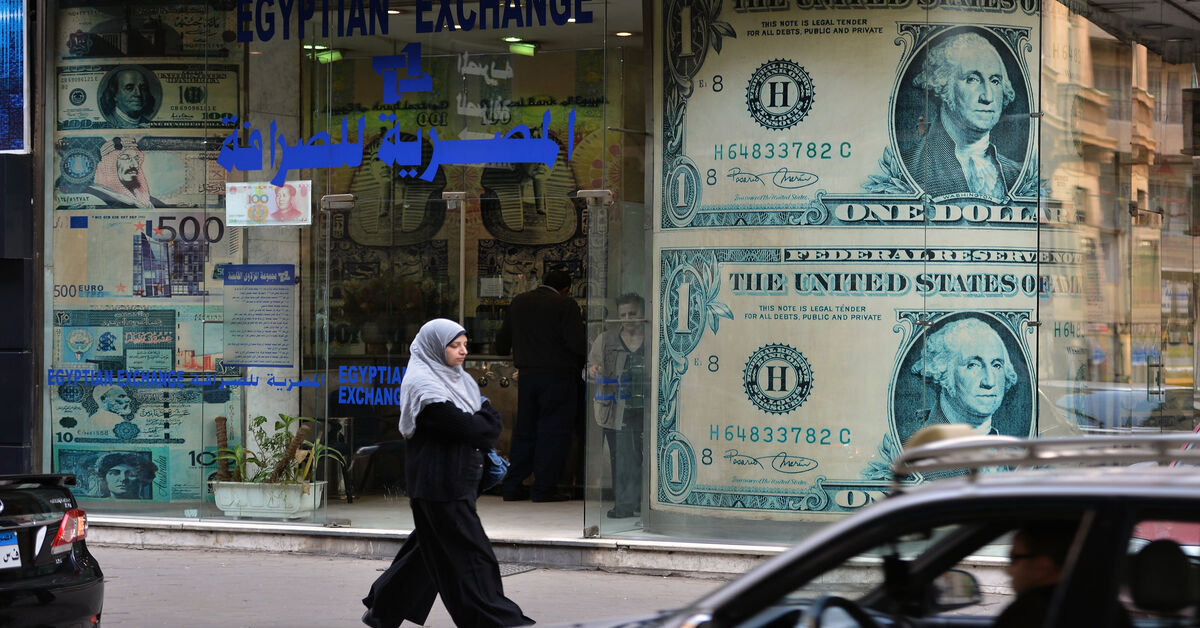Egypt’s external debt is at a safe level, despite reaching an all-time high
[ad_1]
Egypt’s external debt hitting record high at $ 137.85 billion in June, against 134.84 billion dollars in March, analysts call for more focus on public investment to accelerate economic growth in the years to come.
The World Bank Report titled “International Debt Statistics 2022,” said the external debt stock of the two largest borrowers in the Middle East and North Africa region – Egypt and Morocco – increased by 14% and 19%, respectively, in 2020.
However, despite the unprecedented levels of external debt, several analysts have assessed the high potential for repayment of Egyptian debt, arguing that the short-term tranche of external debt amounts to around 9.8% of gross debt.
In addition, it is the efficiency of the use of foreign currency inflows that should matter, Hanan Ramses, an economic expert at the Cairo-based company El-Horreya Brokerage, noted.
“We should look at debt as a relative matter in percentages and not as an absolute number. What really matters is the effectiveness of debt instruments and the cost-effectiveness of their use. In addition, the Egyptian authorities have succeeded in reducing short-term foreign debt to 9.8% of the external total, â€Ramses told Al-Monitor.
In absolute numbers, Egypt’s external debt nearly quadrupled from $ 36.775 billion in 2010 to $ 137.8 billion in June 2021. Public sector debt stood at $ 98.857 billion.
Long-term debt stood at $ 121.5 billion, or 90.2 percent of gross external debt, while short-term debt stood at $ 13.3 billion, or 9.8 percent , at the end of March 2021, according to data from the Central Bank of Egypt (CBE).
“The debts have been injected into the country’s infrastructure, health care and the redevelopment of slums. The aim is to improve the standard of living of ordinary citizens across the country. However, debt ratios in terms of gross domestic product [GDP], exports, foreign exchange reserves, etc., are within spared levels, â€Ramses said, noting that external debt / GDP is around 34%.
Egypt’s external debt to gross national income (GNI) was 37% in 2020, according to the aforementioned World Bank report. report. While the external debts of South Africa and Turkey totaled $ 170.7 billion and $ 435.8 billion, respectively, in 2020, external debts represented 58% and 61% of GNI, respectively.
“Compared to other emerging economies, we are doing well,†Ramses said, noting that Egypt’s external debt maturity has shifted to long-term instruments.
Long-term external debt stood at $ 121.5 billion, or 90.2 percent of gross external debt, in March 2021, according to CBE data. Non-resident holdings of Egyptian bonds stood at $ 28.7 billion in March 2021, up 20% from June 2020.
Is there an ideal recipe for lasting control of external debt? Ramses simply puts exports and tourism at the top of his priorities.
“How to increase the country’s hard currency inflows is a major challenge. It is essential to encourage all kinds of exports and to curb imports, especially commodities produced in Egypt, â€she said.
The economist explained how rising global natural gas prices could open the door to more opportunities for Egypt, which is an exporter of liquefied natural gas and gas.
“The optimal use of economic resources will be the only way to bridge the country’s financing gap in the long term,” she added.
The country’s balance of payments recorded a surplus of $ 1.9 billion in fiscal 2021, which ended June 30, from a deficit of $ 8.6 billion a year earlier, according to CBE data.
However, Egypt’s current account gap widened to $ 18.4 billion in fiscal 2021, compared to $ 11.2 billion.
Foreign holdings of local banks fell by around $ 10 billion between February and August 2021, as some of those foreign assets were used to meet foreign currency obligations, said Zeinab Abdalla, director of financial institutions at Fitch reviews.
“As a result, the banks recorded a net international investment position of about $ 4.4 billion against a net external asset position of $ 6.7 billion at the end of February,” Abdalla told Al-Monitor. “We expect banks’ net international investment position to narrow in September, supported by foreign currency inflows from the $ 3 billion sovereign Eurobond issuance.”
Additionally, JP Morgan revealed that Egyptian bonds will be listed on the International Financial Agency’s Emerging Markets Index as of January 31, 2022. JP Morgan has set Egypt’s weighting at 1.85%.
The re-listing of Egypt is supposed to strengthen the country’s sovereign rating as well as foreign appetite for its Eurobonds. In 2011, JP Morgan delisted Egypt from its GBI-EM index following the January 25 revolution.
“The inclusion of Egypt in the JP Morgan Emerging Markets Index could help attract more foreign investors and inflows of currencies. However, the weakening of the Federal Reserve and a global rise in interest rates could trigger a new wave of sales of Egyptian Treasuries by foreign investors and further outflows, â€noted Abdalla.
She concluded: “If the banks’ net international investment position continues to widen, this could have a negative impact on their foreign currency liquidity and their foreign currency debt service capacity.
[ad_2]

